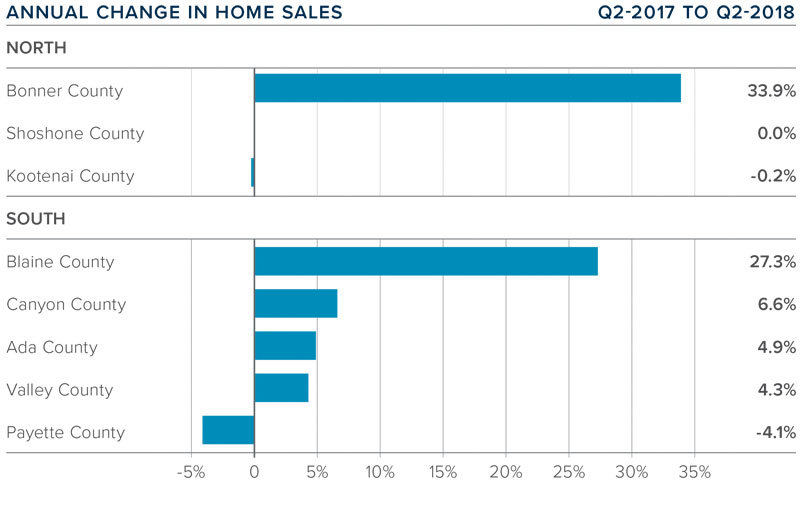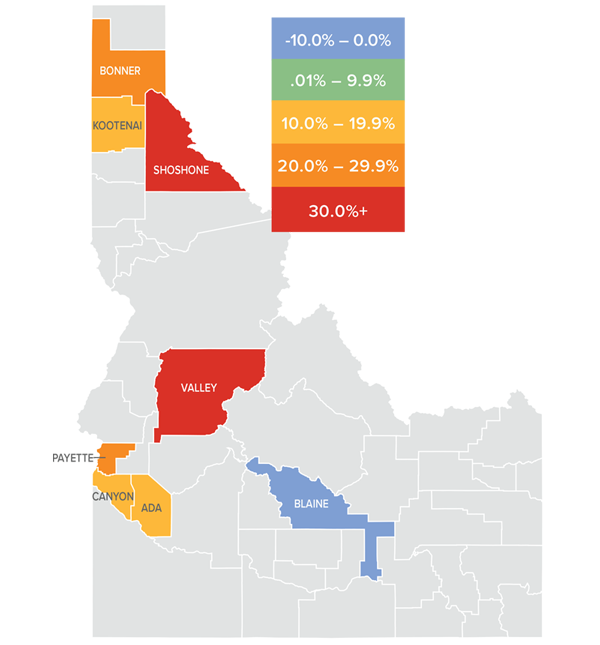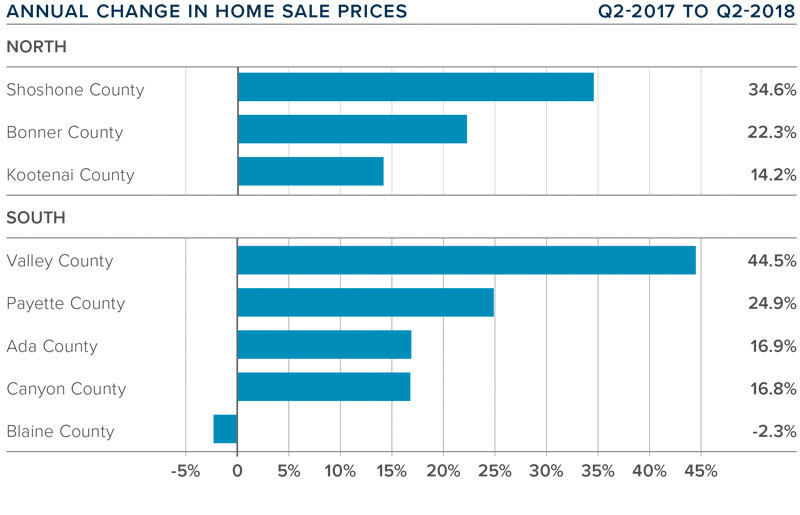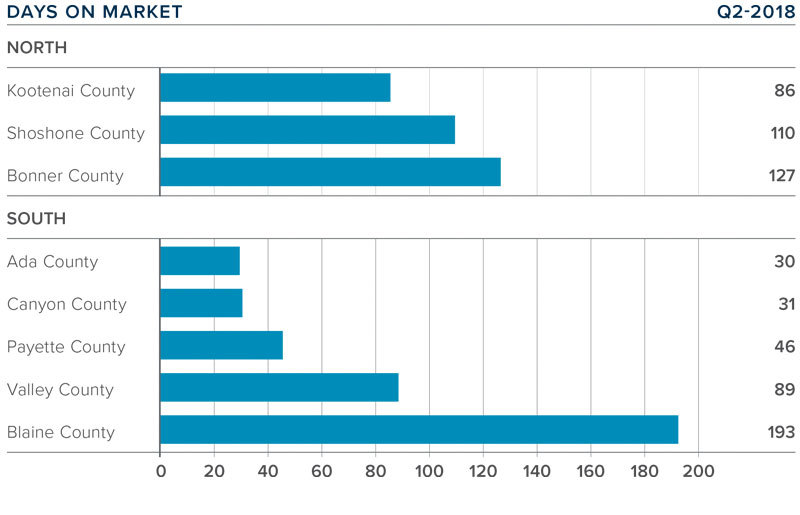The following analysis of select Idaho real estate markets is provided by Windermere Real Estate Chief Economist Matthew Gardner. We hope that this information may assist you with making better-informed real estate decisions. For further information about the housing market in your area, please don’t hesitate to contact your Windermere agent.
ECONOMIC OVERVIEW
Job growth in Idaho tapered somewhat over the past few months but the state is still adding jobs at a fair pace. In total, the state has added 21,800 new jobs over the past 12 months, representing a solid growth rate of 3.1%.
In May, the state unemployment rate was 3.1%, down from 3.4% a year ago. The state is, essentially, at full employment but I still stand by my forecast that Idaho will have added around 20,000 new jobs by the end of 2018.
HOME SALES ACTIVITY
- 5,865 homes were sold during the second quarter, representing an increase of 5.7% over the second quarter of 2017.
- Sales rose the fastest in Bonner County, where they were up by a substantial 33.9% relative to the second quarter of 2017. There was also a noticeable increase in Blaine County.
- Year-over-year sales growth remains generally positive across the region, with relatively modest declines in sales in Payette County and Kootenai County.
- The data continues to suggest that demand for housing remains strong; however, pending home sales only rose by 4.7% compared to the second quarter of 2017. This suggests that closings in the third quarter may be slower.

HOME PRICES

- The average home price in the region rose 16.6% year-over-year to $334,021.
- Valley County again led the market with the strongest annual price growth. Homes there sold for 44.5% more than a year ago, but, as regular readers know, markets with very few sales are sometimes prone to extreme price swings.
- The region saw price increases in all but one county when compared to the second quarter of 2017. The outlier was Blaine County, which saw a modest drop.
- Listing activity—which was down by 20% from a year ago — continues to drive home prices up at above-average rates. This is likely to continue through the balance of the year and into 2019.

DAYS ON MARKET
- The average number of days it took to sell a home in the region dropped by 13 days when compared to the second quarter of 2017.
- Homes in all surveyed counties took less time to sell than they did in the same quarter of 2017, suggesting that demand remains buoyant.
- It took an average of 108 days to sell a home in Northern Idaho and 78 days in the southern part of the state.
- Again, homes sold the fastest in Ada and Canyon Counties, where it took an average of 30 and 31 days, respectively.

CONCLUSIONS

The speedometer reflects the state of the region’s housing market using housing inventory, price gains, home sales, interest rates, and larger economic factors.
Confidence in housing has not diminished even in the face of modestly rising interest rates, causing the markets in this report to perform well overall. Home prices will continue to appreciate at above-average rates as long as inventory does not meet demand. As such, I have moved the needle just a little more in favor of home sellers.

Matthew Gardner is the Chief Economist for Windermere Real Estate, specializing in residential market analysis, commercial/industrial market analysis, financial analysis, and land use and regional economics. He is the former Principal of Gardner Economics and has more than 30 years of professional experience both in the U.S. and U.K.
 Facebook
Facebook
 X
X
 Pinterest
Pinterest
 Copy Link
Copy Link



